Labradoodle Colors Coat Shades [with Photos]
If you’re looking to adopt a Labradoodle, there are many options to consider, including the color of the dog’s coat. Labradoodles are available in a wide range of colors, and every coat offers a range of patterns or color blends that personalize the dog’s appearance.
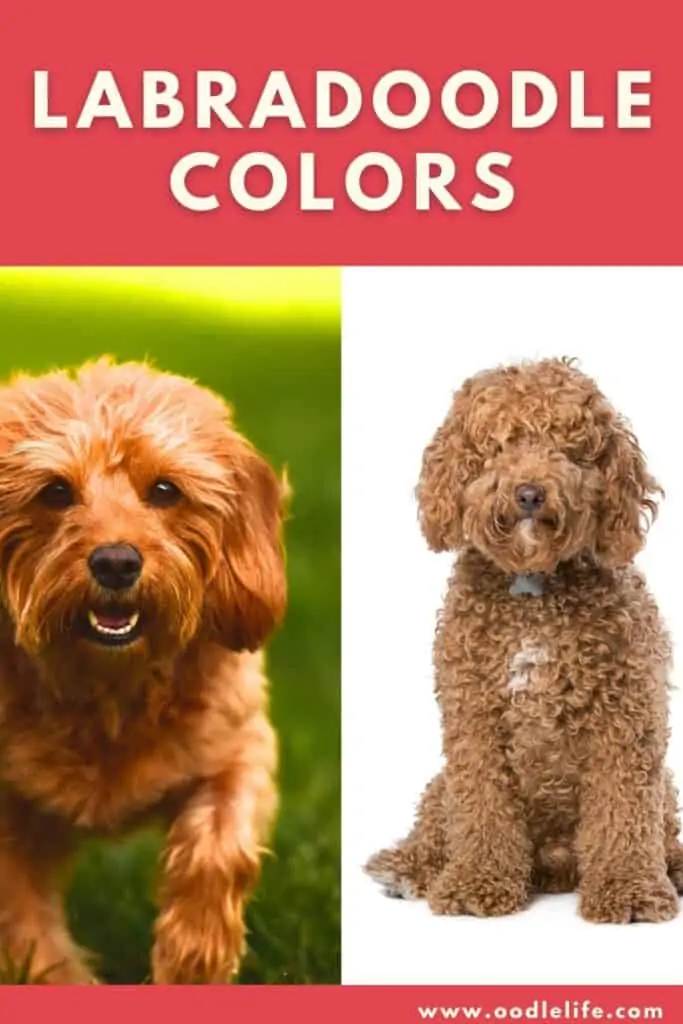
Before you choose your Labradoodle puppy, it’s helpful to get acquainted with the different types of colors and how they may change over time. If you’re not searching for a specific color, you can learn about their attributes so you know what to expect as your dog develops and grows.
Standard Labradoodle Colors
The following colors are the most common you’ll find when you’re looking to adopt a Labradoodle puppy. When you determine each puppy’s color, there is a set of characteristics that fit each category. These attributes give you a clear idea so that you’ll know what to look for initially and what to expect when your dog grows into an adult.
Chocolate

Labradoodles with a chocolate coat usually have a solid brown color. In most cases, the tone is even throughout, though it’s prone to fade or lighten over time. You may find the fading process accelerates if your dog is outdoors in direct sunlight regularly. Dogs with this color tend to have rose or pinkish-brown noses.
Light Brown or Caramel
These dogs range in colors from very light yellow or caramel to a slightly darker brown with hints of red or copper. Some Labradoodles may have hints or highlights throughout their coat for a dimensional appearance. Color variations and blends range from cream and caramel to darker hues of red or apricot.
Labradoodles with these light brown and caramel blends tend to have noses that closely match their coat or similar, such as copper, golden brown, or caramel tones.

Golden/Apricot Tones
Labradoodles with a golden coat tend to be a bit darker than cream or parchment and maybe darker, resembling a copper or apricot hue. The golden shade may vary a bit, though. For each puppy, it should be an even tone overall. As they grow into adults, the fur coat may fade or lighten. The nose color is black or dark brown.
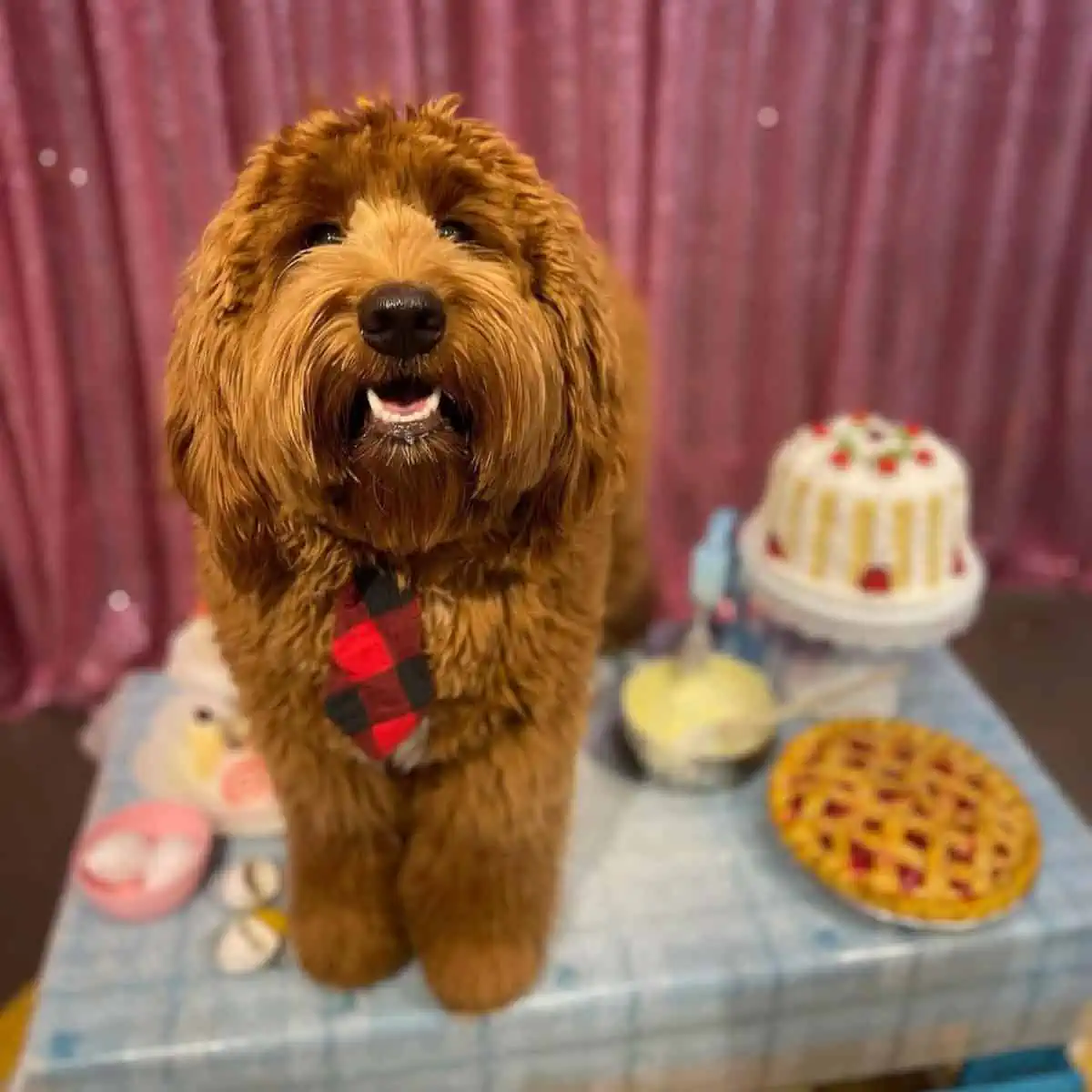
Black
Some Labradoodles with a black coat are solid in color, without any highlights or changes in pigment. On the other hand, other black dogs are also a mix of silver or blue shine. Only dogs with a solid, even coat in black are considered to have this color. They will maintain the sharp black tone as a puppy until they’re fully grown.
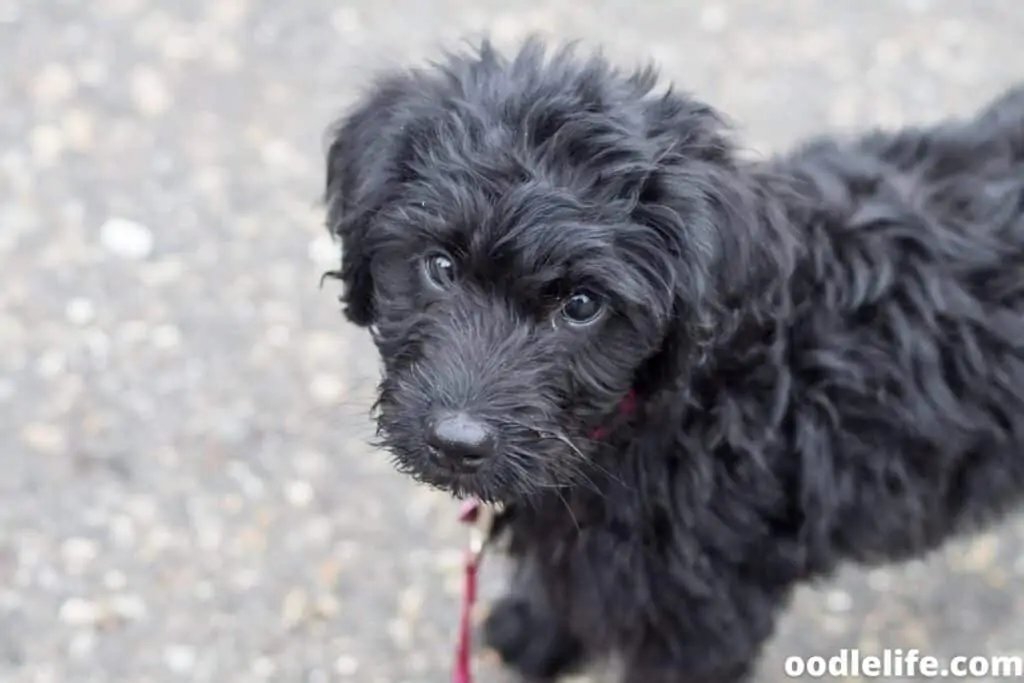
Blue
Dogs with blue or greyish-blue coats are often born with a blended fur color of grey and blue colors, which eventually deepens into blue as they grow, which takes a few years. You’ll notice many of these Labradoodles develop a coat that’s smoky blue with solid grey undertones.
Overall, the color is solid once the breed is fully grown. Labradoodles with this color tend to have brown or greyish-brown noses.

Cream Tones
A Labradoodle with a cream-colored coat will typically appear a bit darker than a white coat. They may also have caramel highlights, meaning they will change their color as they grow into adults. The nose pigments tend to be black or dark brown, and dogs with caramel and cream blends may retain these colors or change to solid cream.

White
If you choose a Labradoodle with a white coat without any variations in color or blends, they tend to retain this color as they grow from puppy to adult. This color is also known as chalk. If you notice any other colors mixed into the white, the overall coat will likely change as the puppy grows into an adult.
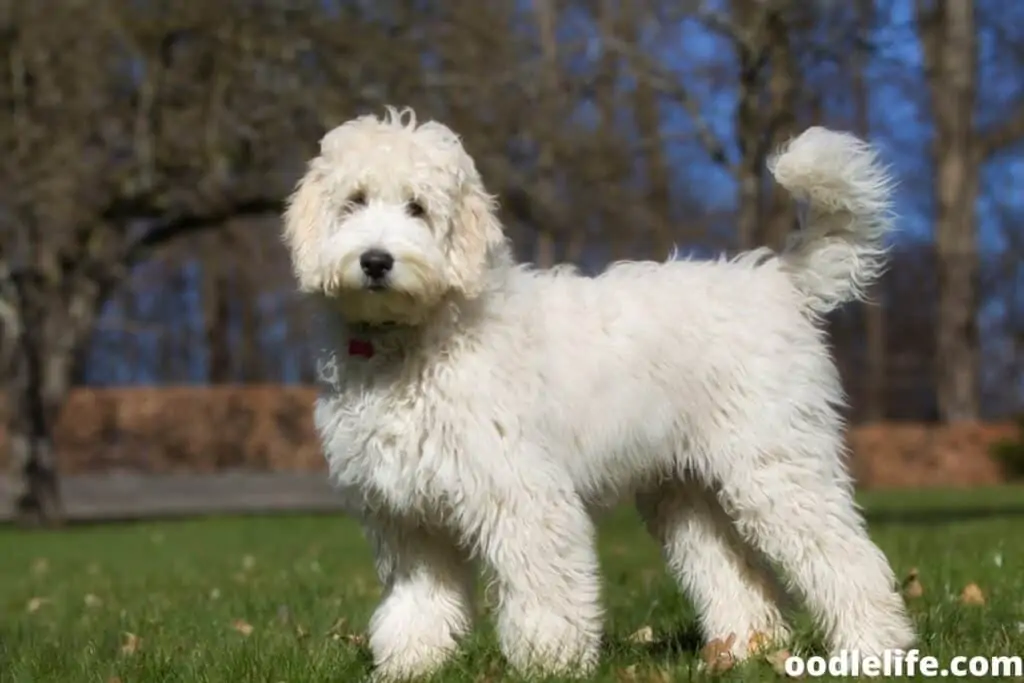
Parchment or Muted brown
This color is close to cream or white with a muted beige or brown tone. It’s a solid color that’s not mixed with darker or lighter shades. Labradoodles with this fur tone tend to have noses with a brown or reddish-brown color.

Rare Labradoodle Colors
Labradoodles are available in many different colors, including some rare hues and blends that you won’t easily find.
If you’re interested in adopting a puppy with a unique coat or blend of colors, you may want to consider one of the following coats. You may wish to contact some local breeders and inquire which colors of Labradoodles they have or find a specific breeder who offers a puppy with a unique coat.
Red

One of the rarest Labradoodle colors is red. While some copper or gold-colored puppies may be considered red, this specific hue is darker and more unusual to find. This color isn’t as standard in breeding. Also, the red coat should be consistent throughout, from root to tip, without any fading or other colors mixed in.
Since this color is one of the least common in Labradoodle puppies, you can expect to pay a higher price than other colors. In addition to having a rich, red coat that’s even, the nose color is black, which is the sign of an authentic red Labradoodle.
Phantom Markings on a Labradoodle

A Labradoodle with phantom markings is defined with two distinct colors, usually black or grey with white or cream, where there is one color just above the eyes and to the sides of their nose (usually the darker color). The lighter shade is typically below the nose, covering the chin and chest.

The pattern is usually consistent in most dogs below the chest, extending to the rest of the body. The lighter color covers the lower half of the feet and paws, and the darker color covering the belly. Gold and black phantom markings are also standard among this type of Labradoodle, though overall, they are rare to find.
The nose color for Labradoodles with phantom markings is usually rose or black. This characteristic may change depending on the combination of hues on the coat. This type of Labradoodle is defined not just by the colors but by the specific markings.
Abstract Colors
These Labradoodles have a blend of colors in a variety of mixed patterns. This blend happens with more than one coat color. Any color combination can be considered an abstract Labradoodle, although there needs to be less than 50% white in the dog’s coat. These puppies are among some of the rarest you’ll find.
Color Types and Patterns
A Labradoodle’s colors are determined by the specific colors and shades and the type of color or pattern. Three main categories play a role in the kind of color for your puppy.
Solid Colors
A dog with a solid color coat is defined as having no other strands or additional hues, except for a white piece or patch of no more than one inch in diameter.

This small amount of color variance can appear on several parts of the puppy, including the feet, tail, or chest. Any patch of fur in another spot of the body or more significant means your Labradoodle isn’t considered a solid color.
Phantom Pattern
Much like the coloring, which is rare, these markings are specific and defined. While various types of color combinations are acceptable, it’s the particular markings that determine whether your Labradoodle is considered a phantom.

Parti
While abstract Labradoodles include various colors and patches with no more than 50% white fur, parti essentially fits the same criteria, with colors that can be any series of colors and patterns.
It’s a rare color pattern, though parti Labradoodles encompass many pattern combinations and patterns, without any specific style required. In some dogs, you’ll notice a bit of freckle within some solid color patches, which is permissible as a parti or abstract.
What Types of Patterns Are Available for Labradoodles?
There are several types of patterns to watch for when you choose a Labradoodle. Multiple patterns and colors are unique to specific dogs and tend to be rare, including parti or abstract styles. While there are particular criteria for brindle, sable, and parti coats, this type of color is referred to as a multi-pattern.
Brindle Stripe Patterns
Brindle patterns resemble a series of stripes, much like a tiger, that usually combine a set of lighter and darker colors. The lighter tones tend to be cream, chalk, or parchment set against a darker fur color of black, silver, or red.
Sable Patterns
This pattern combines lighter colors and tones with a darker color or tone on the tips of the fur or hair strands. Sable fur can be even or uneven in how the dark tips are distributed, both of which are acceptable to be considered this type of Labradoodle.
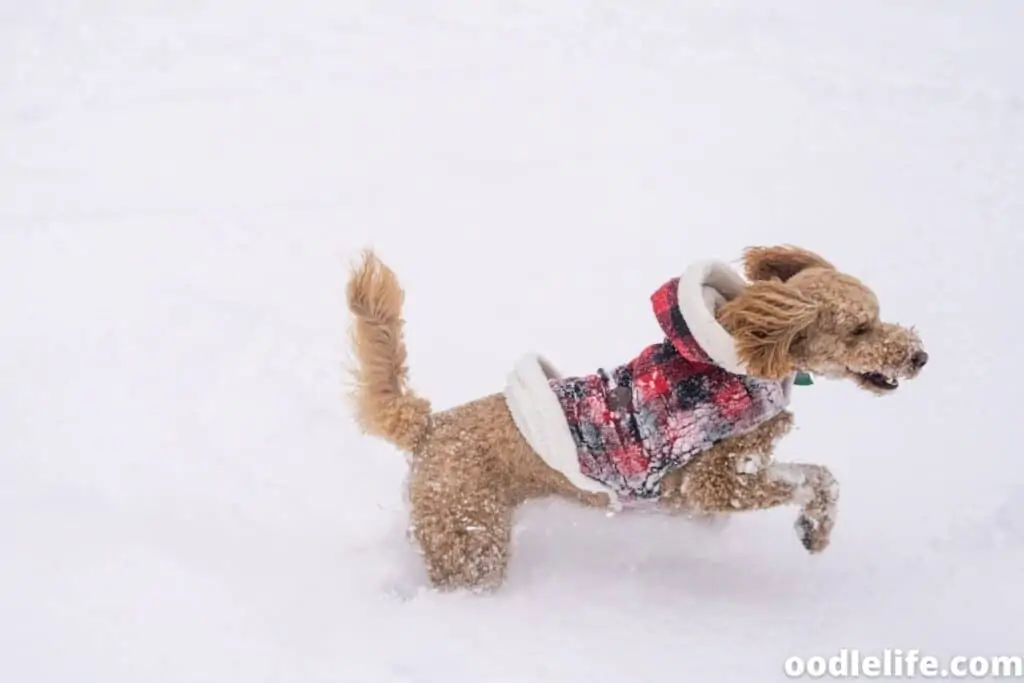
Summary
There are many colors, patterns, and specific styles of fur you’ll notice as you search for your Labradoodle puppy. As you become familiar with these incredible dogs’ different types and colors, you’ll find many of the puppies offer a unique look, especially the less common parti or abstract coats.
Whether you decide on a rare color for your Labradoodle or a more standard coat style, there are many attractive options and styles to consider when you adopt your new puppy.